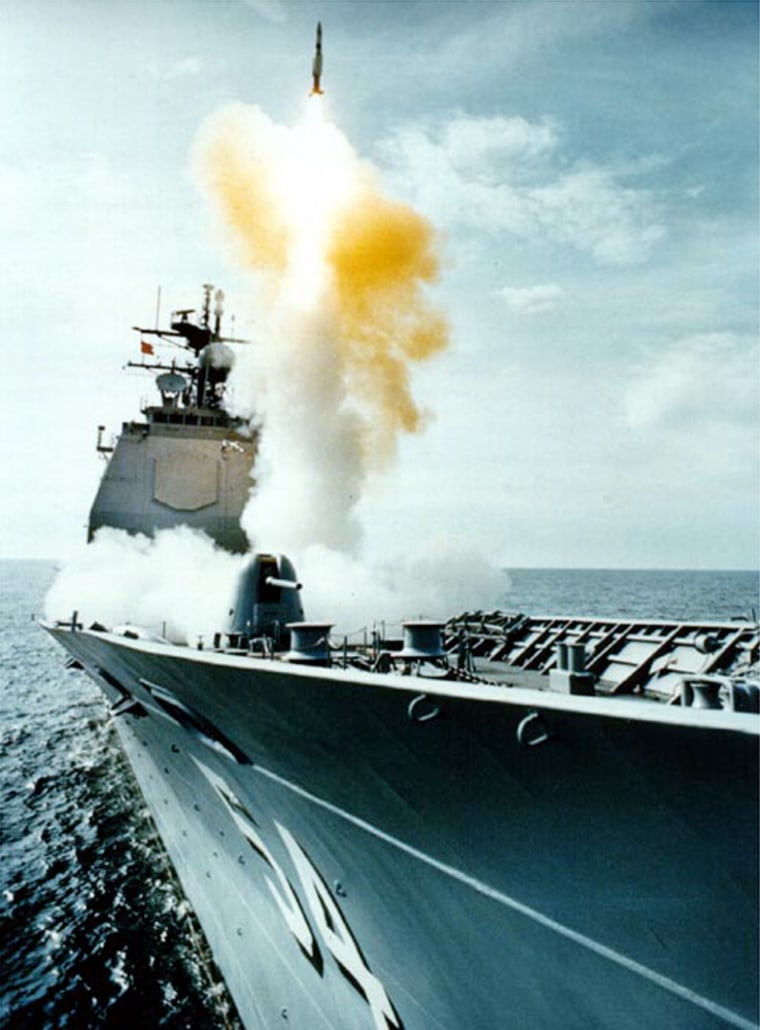The U.S. Navy said Monday it would put a guided missile destroyer in the Sea of Japan in September as part of a U.S. effort to deploy a missile shield to protect against attacks from countries like North Korea by the end of 2004.
Navy Secretary Gordon England said the destroyer — equipped to track potential enemy missiles — would remain in the Sea of Japan “on a virtually continuous basis” as “part of the president’s directive to accelerate the fielding of a ballistic missile defense operational capability.”
Chris Taylor, spokesman for the Pentagon’s Missile Defense Agency, said a total of seven Navy destroyers — including the one in the Sea of Japan — would be equipped with long-range missile tracking and surveillance capability by the end of 2004. Fifteen would be equipped by early 2006.
By the end of 2005, the Navy would have three Aegis cruisers equipped with the Standard Missile 3 system to shoot down short- or medium-range missiles launched against U.S. or allied targets, Taylor said at a conference sponsored by the Missile Defense Agency and the American Institute of Aeronautics and Astronautics.
The planned deployment of a U.S. destroyer in the Sea of Japan — which separates Japan from North and South Korea and Russia — comes amid concerns about North Korea’s nuclear program.
It will also coincide with U.S. plans to put on alert several ground-based interceptor missiles at Fort Greely, Alaska, by Sept. 30 to defend against limited ballistic missile attacks from countries like North Korea.
Lt. Gen. Ronald Kadish, director of the Missile Defense Agency, stopped short of predicting the fielding would occur by the target date of Sept. 30, saying only: “It looks like it’s going to be done this year.”
Critics say the U.S. effort, budgeted at $53 billion over the next five years, could trigger an international arms race to overwhelm antimissile defenses, and worry that new technologies will be fielded without adequate testing.
Kadish said he strongly favored increasing cooperation with U.S. allies on the vast project.
He said the State Department and Pentagon had already initiated some changes to relax export restrictions that made cooperative efforts difficult but more work was needed. He welcomed congressional efforts to support that goal.
